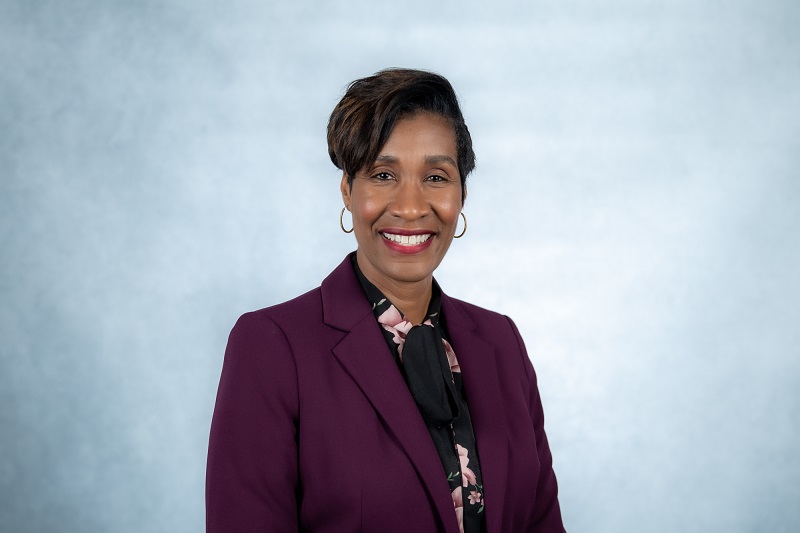Dr Virnitia Hendricks talks about her role as Chief Diversity Officer at Santander US and why culture needs to drive diversity, equity, and inclusion (DE&I).
How did you become Chief Diversity Officer at Santander?
I joined Santander in 2020 as a consultant for Santander Consumer USA, our auto division. In the wake of the murder of George Floyd, many organisations showed a recommitment to DE&I.
I was brought in to work with other leaders to help the organisation advance its DE&I journey. I recommended that Santander Consumer appoint a chief diversity officer and establish an Office of Diversity, Equity and Inclusion to accelerate its efforts.
I was excited that Mahesh Aditya, CEO of Santander Consumer USA, was completely aligned and personally engaged as DE&I executive sponsor. We gained great momentum and successfully achieved our DE&I goals, and in 2022, I was appointed Chief Diversity Officer for Santander US.
What is your background, and what led you to the DE&I space?
My background is in insurance and financial services. I worked for over 20 years at Travelers and New York Life before setting out on my own.
I felt very strongly about culture, and I wanted to help organisations shape their culture and leaders embrace change. I understood corporate America, having spent so much time there. My clients, mainly CEOs and senior leaders of Fortune 100/500 companies, would constantly ask about DE&I, saying they’d been spending millions, in some cases billions, of dollars – and decades – but not seeing progress.
With my passion for cultural transformation, I wanted to explore how DE&I could be used to help shape organisational culture. So, I studied it and found that the DE&I space needed to be revolutionised. We needed to think about DE&I differently and not in the same traditional ways that haven’t brought enough progress. So that’s how I got into it.
What do you mean by looking at DE&I differently?
This is where I’ll use my expensive education. I have a doctorate in organisational leadership, and knowing that organisations are organisms made up of several parts and are organic – meaning they constantly change and move – I looked at the history of DE&I. When did it first become a serious topic? When did it become a business imperative and a priority for some organisations, and how has it evolved through the years?
So many people had paved the way, pioneering through the early days of DE&I but was it enough? That brought me to the point where I felt we’d lost the way by being so inundated with rhetoric, buzzwords, check-the-box exercises, and the flavours of the month.
It seemed that most people wanted to latch on to whatever was hot at the moment and focus on what they could do to check the box versus putting in sustainable things that genuinely have a transformative impact on the culture.
I firmly believe that DE&I is a subset of the culture. We were trying to put DE&I on top of the culture when it’s the culture that needs to drive it. That’s the big shift in the difference I saw when I looked at where DE&I was evolving and what I felt needed to happen to make an impact and difference.
Does there need to be a formal route into this career?
There needs to be some basis of knowledge, and there is a route in terms of psychology, behavioural study and science because we’re talking about people and how they think and feel. DE&I would be more effective if people could truly understand its foundation and where it needs to evolve. The danger becomes that people get stuck in the traditional ways of thinking. And because DE&I is about people who are evolving and full of emotion, it needs to be innovative and move as society does.
I worry that if we create such a discipline and make it scientific, you will have practitioners that will go by the book. And they may well literally follow the script.
It has been said that HR can become fixated on the process and preserving the business rather than preserving the people. How do you overcome that?
HR is critical in business success and an important enabler in shaping organisational culture. DE&I is a business imperative, not just an HR necessity. Part of our success, and my success, is because I had a business background and could help articulate the business value of investing in DE&I. I was able to speak the language and help leaders connect the dots between the business and this very important differentiator – an inclusive and diverse culture – and how they could personally connect to the topic.
In taking the chief diversity officer role, I felt that DE&I should report to the CEO and have a strong alignment with HR. And it needed to add value along with all the other important parts of the business. At Santander, I sit on the US leadership team, reporting to Santander US CEO Tim Wennes to weigh in on products, strategy, and services and how we’re driving the business. Not just from an employee perspective but more broadly. That has made a huge difference in how we’re embedding DE&I.
How do you ensure everyone in the organisation is accountable for DE&I?
All our leaders have accountability, we have performance goals, and we make sure that everyone’s invested in our progress. By not over-emphasising representation and starting with inclusion and psychological safety, we grow diversity as the outcome.
It starts with inclusion, and equity is how we get there. We do a quarterly engagement survey which shows we are currently in the top quartile of financial services companies for DE&I engagement. But we wanted to go beyond the surveys to understand how employees felt about our DE&I efforts.
Based on a sentiment analysis conducted last year, our employees trust that we are committed to DE&I, and that’s showing in our diverse representation. At Santander, everyone is responsible for DE&I. Whether through our Business Resource Groups, community involvement, or how we serve our customers, we are focused on listening, learning, and making an impact.
Do you measure whether people feel included and have a sense of belonging?
Measuring inclusion can be challenging. It’s based on how employees feel about their sense of belonging. We measure inclusion on several dimensions. We can gather some insights through our employee engagement surveys, but we go beyond the surveys with listening sessions and focus groups that give us qualitative data in the voice of our employees.
We also consider and measure participation and engagement in our DE&I initiatives, not just that someone showed up, but did the initiative have an impact. What was the ‘so what’ of it all? In our participant surveys, we ask for that feedback. What are you going to do with this information? How has it changed you? How has it impacted you? Whether that’s an event or participation in our mentorship or financial empowerment programmes, capturing employee sentiment is important to understanding their sense of belonging.
Those are some ways we’re looking at engagement, but in our strategy, we also look at how many communities and lives are impacted by our work. Then, this is the one that really makes us different; we measure DE&I sustainability. We assess how many new best practice standards we have been able to influence and change because of the DE&I work. We want DE&I to be embedded in how we do business. We’re building the capabilities today to help us evolve in the future. And we measure that as well.
Do you think the banking industry generally understands the benefit of DE&I, or is it still just chasing the numbers?
When you think about corporate social responsibility, ESG, and the regulatory things that investors are looking at, it makes people get in the game because there’s accountability, and people are watching.
But we know it’s not about what we’re being told to do or what we think we must do. It’s really about who we are. I’m beginning to see banks really define themselves and their culture, which is the key to it all, much better than we have in the past. And that’s what resonates with the customers, communities, and employees.
We’re seeing that shift in the banking industry to where it’s less and less about what we have to do and the metrics we have to report on and more about how we tell our story of who we are. What are our values? What do we stand for? And who makes us up? We’re a collective of individuals. If we showcase individuals and inclusion, you’ll get diversity.
Finally, in achieving that, how do you avoid what they call ‘woke washing’ or window dressing?
I also call it vanity metrics. It looks good, but what’s behind it? It’s helping people understand that this is about transforming organisational culture. This isn’t about woke washing or rhetoric and the flavour of the month, whatever it might be. It’s about people, all the parts of the organisation, including leaders and their connections.
People want to know why they should care. What’s in it for them? Is this good for my business or not? Is it good for my employees or not? DE&I is not about just doing the right thing. It’s about doing the right thing with purpose.
Getting there is a journey, it will take time. And it requires commitment and perseverance to make it happen. And the last thing is you’ve got to see some results that it’s working along the way. Be upfront about the fact that this is a journey, and it’s all about culture.







